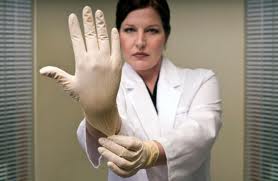Prostatitis is one of the most common diagnoses that men are given if they’re having a new onset of pain “down there” or urinary issues. ‘Prostatitis’ literally means ‘inflammation of the prostate’. There are two basic types of prostatitis, acute and chronic. Identifying which kind is present is important in determining the best course of treatment.
Acute bacterial prostatitis is an infection of the prostate. Like any other infection, symptoms can come on suddenly, including chills and fever. Other symptoms might include pain in the bladder or when urinating. Acute bacterial prostatitis is best treated by your doctor with antibiotics.
Chronic prostatitis has a few manifestations. First, chronic bacterial prostatitis is characterized by gradual onset, and recurrent urinary tract infections. The other is chronic pelvic pain syndrome or nonbacterial prostatitis.
Most men who begin to experience discomfort or dysfunction in their nether regions will head to their doctor to remedy the situation. As stated earlier, if the pain or dysfunction is caused by an infection, medical intervention is necessary. However, there are times where the medical intervention does not end up relieving the man of his pain or during the course of medical intervention it is determined that there is not an infection present. So what can be done for the patient with pain but no infection?
This is the type of ‘prostatitis’ where pelvic physical therapy may help. Physical therapists are experts in treating pain, and identifying ways to manage or eliminate it. Chronic pelvic pain syndrome is a condition where a man may or may not have any inflammation in his prostate. Or if he does, it may or may not actually be contributing to his complaints of pain or dysfunction. Understanding the behavior of the pain, as well as the function of the anatomy in the area (low back, pelvic floor, hips, bladder, bowel and sexual function) can help develop a better understanding as to why the pelvic pain is persisting. Understanding all of the potential contributors to a man’s complaint of ‘pelvic issues’ is key to providing the most effective intervention.
There is a fourth type of prostatitis called ‘asymptomatic inflammatory prostatitis’. This type of prostatitis doesn’t have any symptoms of pain or dysfunction, but ‘signs of inflammation are found when the patient is being evaluated for something else’. If there are no symptoms, and no infection, there does not need to be any treatment for this condition.
Anytime a patient (male or female) comes to me with 'chronic UTIs', I always ask if they were confirmed with a culture. I've seen too many people get treated for 'repeated' infections with no cultures. Does the person have burning with urination and frequency and the patient and doc are assuming infection? And if there is pain due to something else (pelvic floor dysfunction, non-relaxing pelvic floor, etc), a painful bout of urination could make that pelvic floor freak out more. Or if they're already sensitized to pain in that area, then an infection (which hurts) could contribute to ramping up any symptoms in that area. Often prostatitis is more often an assumption than an 'I had a positive test for prostatitis'. A guy has pelvic pain, he is almost certainly going to be diagnosed with pudendal neuralgia or prostatitis, with very little differential diagnosis done.
| Acute Bacterial ProstatitisAcute Infection! See doctor, get medication and everything should be fine. |
Chronic Bacterial ProstatitisRecurrent infections, antibiotics still likely to help, but may take longer |
| Chronic ProstatitisCharacterized by pain and discomfort. I wonder if this is really ‘inflammation of prostate’ or if it is a pain syndrome blamed on the prostate. Antibiotics don’t usually help, maybe Pelvic PT can! |
Asymptomatic Inflammatory ProstatitisNo symptoms to complain of, but inflammation if found incidentally. Not typically treated. |
If infection has been ruled out or treated, but symptoms of pain or dysfunction persist, consider consulting with a skilled pelvic floor therapist. A skilled pelvic floor therapist can assess your pelvic floor muscles for tenderness, ability to contract and relax, as well as assessing other potential contributors to your pain. Physical therapists can also help with function. Unfortunately most of the advice I found online for men experiencing pelvic pain were to just avoid all things that might exacerbate their symptoms, like sitting or riding a bike. While I don’t suggest doing things purposefully to exacerbate pain, understanding the cause of the pain and addressing it will allow you to keep doing the things you love.





